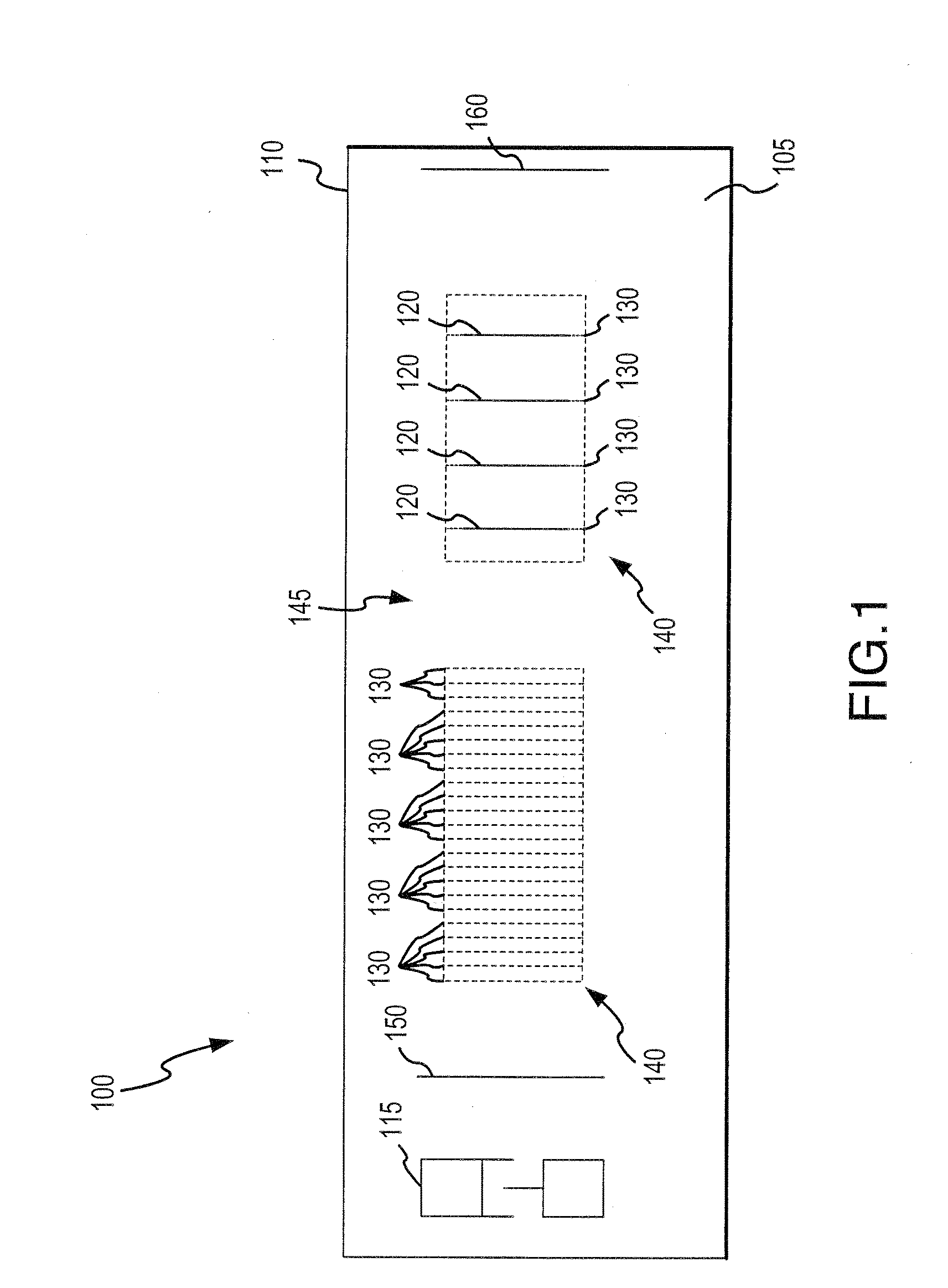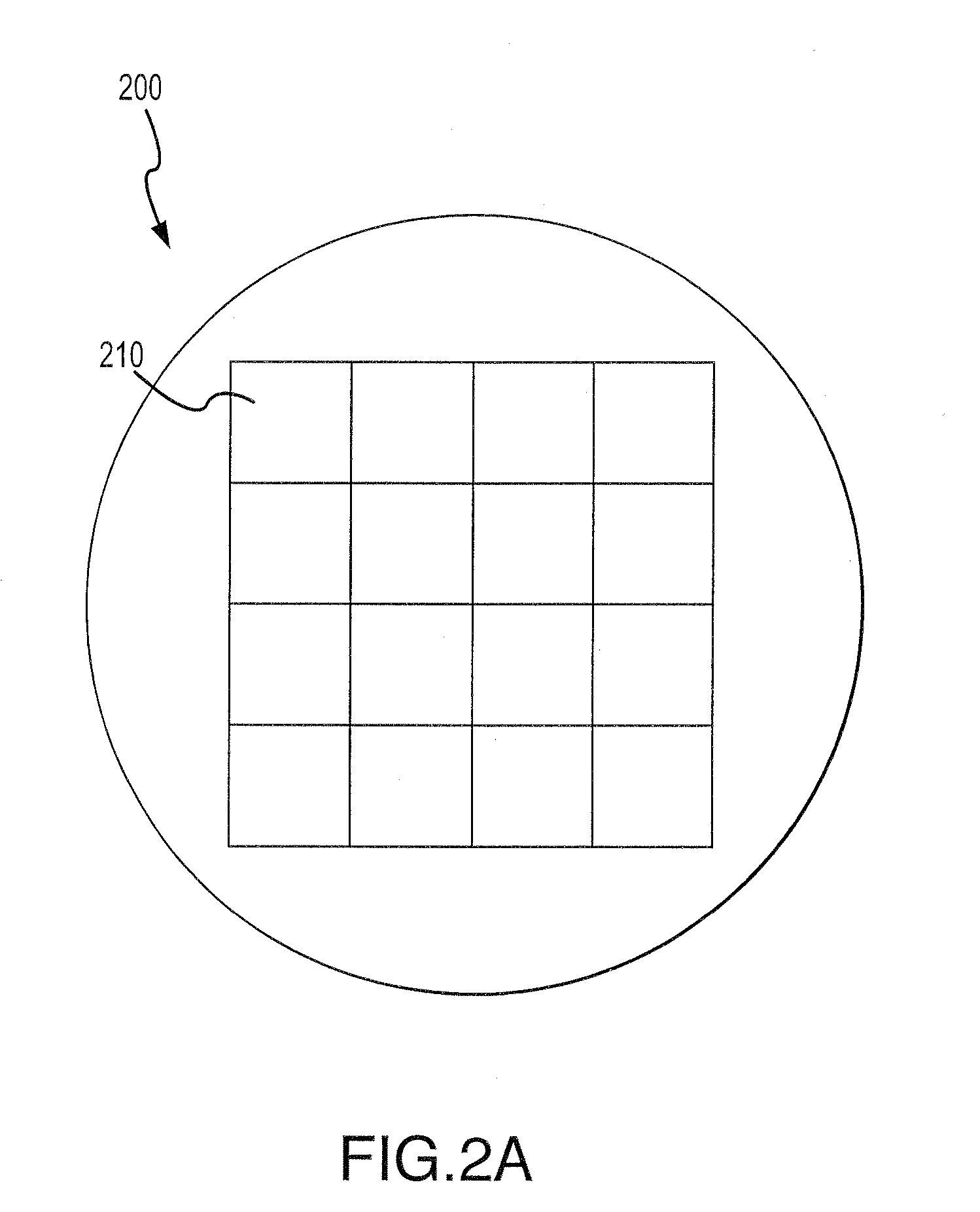Method of manufacturing piezoelectric wafers of saw identification tags
a piezoelectric wafer and identification tag technology, applied in the field of identification tags, can solve the problems of large and expensive antennas, inconvenient manufacturing, and inability to encode data on saw identification tags, etc., and achieve the effect of dramatically increasing the amount of data that can be encoded on each saw identification tag
- Summary
- Abstract
- Description
- Claims
- Application Information
AI Technical Summary
Benefits of technology
Problems solved by technology
Method used
Image
Examples
Embodiment Construction
[0027] Referring initially to FIG. 1, illustrated is a plan view of a top surface 105 of a substrate 110 of an embodiment of a SAW identification tag 100 representative of those formed on piezoelectric wafers manufactured in accordance with the present invention. A description of the illustrated SAW identification tag 100 is presented to provide assistance in understanding the use of silicon or micro-electronic processing techniques to manufacture piezoelectric wafers of SAW identification tags 100. For a detailed explanation of SAW identification tags 100 of the type illustrated see U.S. patent application Ser. No. 10 / 024,624, entitled “Surface Acoustic Wave Identification Tag Having Enhanced Data Content and Methods of Operation And Manufacture Thereof,” by Hartmann, commonly assigned with the invention and incorporated herein by reference.
[0028] Located at one end of the surface 105 of the SAW identification tag 100 is a transducer 115. As those of ordinary skill in the pertinen...
PUM
| Property | Measurement | Unit |
|---|---|---|
| frequency | aaaaa | aaaaa |
| frequency | aaaaa | aaaaa |
| length | aaaaa | aaaaa |
Abstract
Description
Claims
Application Information
 Login to View More
Login to View More - R&D
- Intellectual Property
- Life Sciences
- Materials
- Tech Scout
- Unparalleled Data Quality
- Higher Quality Content
- 60% Fewer Hallucinations
Browse by: Latest US Patents, China's latest patents, Technical Efficacy Thesaurus, Application Domain, Technology Topic, Popular Technical Reports.
© 2025 PatSnap. All rights reserved.Legal|Privacy policy|Modern Slavery Act Transparency Statement|Sitemap|About US| Contact US: help@patsnap.com



